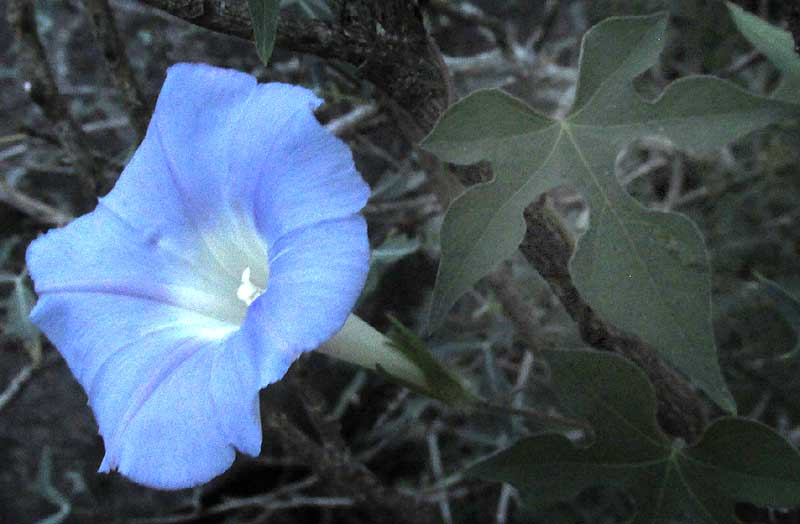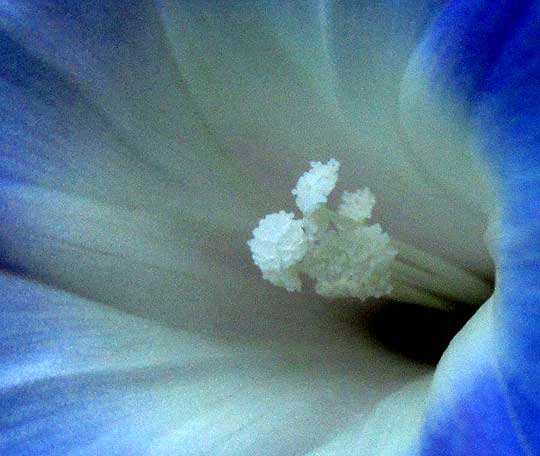Excerpts from Jim Conrad's
Naturalist Newsletter

page October 12, 2014 Newsletter issued from the Frio Canyon Nature Education Center in the valley of the Dry Frio River in northern Uvalde County, southwestern Texas, on the southern border of the Edwards Plateau; elevation ~1750m (~5750 ft); N29.62°, W99.86°; USA
LINDHEIMER'S MORNINGGLORY
The next morning I broke camp before the sun rose above the hills to the east, but when already enough light shone to see my way. With the new tent in my backpack I stepped off the massive layer of Cretaceous Edwards Limestone capping the hill and suddenly found myself beside a blue morning-glory flower glowing with more ethereal light than seemed possible for such a still-dark morning. That's it above.
Though I'd not seen this species here during my two-year stay, I thought I knew who it was, for back in Mississippi such a blue-flowered morning-glory with three- and five-lobed leaves put on real shows when entangled in fences and twining over roadside bushes. But other morning-glory species also can produce blue flowers and deeply lobed leaves, so I checked more features.
First, notice the long, slender sepals, or calyx lobes, from which the corolla arose, paying special attention to how long hairs at the calyx base and on the flower stem, or pedicel, face backward. That important field mark is shown below:

Also the blue flower's throat is white, not dark, and the pollen-filled anthers cluster close to a three-parted, biscuit-shaped stigma, as shown below:

It's what sometimes is called the Lindheimer's Morningglory, IPOMOEA LINDHEIMERI, native southwestern Texas and northwestern Mexico.
At first I thought this was another, very closely related species also sometimes called the the Ivy-leaf Morning-glory, Ipomoea hederacea, but at the iNaturalist website, user "alexiz" pointed out that the sepals of Ipomoea hederaceae have a different shape, and tend to curve backwards. This taxon, being restricted to such a small geographic area and being a dry-land specialist, is much more interesting.